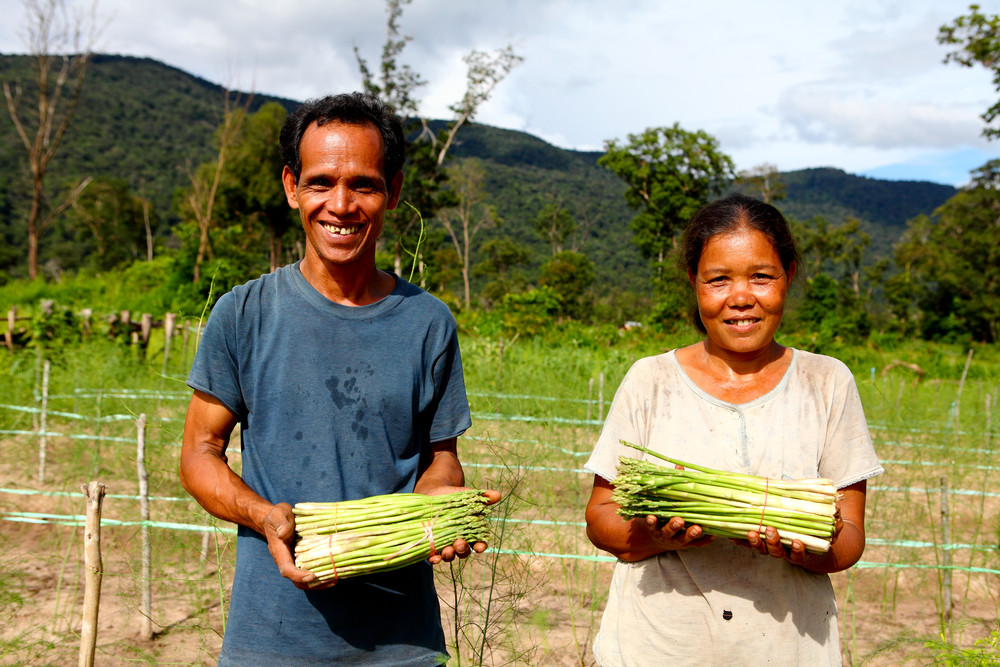What is rural transformation, and how can rural people achieve sustainable change that is social as well as economic? First in a series leading up to the IFAD Governing Council.
Source: IFAD News
This year represents a critical juncture for global development. The process of defining new Sustainable Development Goals provides an opportunity to refocus policies, investments and partnerships for more inclusive, sustainable and people-centred development. Consultations on the post-2015 development agenda have already helped give shape to a shared vision: a world where extreme poverty has disappeared, everyone has access to adequate and nutritious food, decent jobs are available to all, and natural resources are preserved and restored.
Smallholder farmers and other rural people have enormous potential to help achieve this vision. Realizing their potential will require increasing productivity, as well as improving their access to markets, finance, technology and information to build more diversified and resilient rural economies. Poverty has multiple dimensions that go beyond low levels of income, consumption and material assets. This is why IFAD targets its investments towards rural transformation – a sustainable and comprehensive level of change that is social as well as economic.

Pisha (50) and Thuam (45) along works in their asparagus field Attapeu province, Lao People’s Democratic Republic. ©IFAD/GMB Akash
Rural and urban interdependencies
Rural transformation highlights the interdependencies between rural and urban economies, with thriving rural areas and cities linked in a mutually supportive process of development. Growing populations in urban centres mean that rural economies will increasingly be called upon to produce more high-quality foodstuffs and a range of agricultural goods and services in order to meet demand.
Investing in rural people is also strategically important in the fight against poverty. Agriculture-based GDP growth is five times – and in sub-Saharan Africa, up to 11 times – more effective in reducing poverty than growth in any other sector. Where inequalities such as increased urban poverty, hunger, unemployment, overcrowding and slums exist, these often arise because of the absence of rural livelihood opportunities. Similarly, the conditions that hinder rural transformation provide fertile ground for conflict and unrest.
As the only United Nations agency and international financial institution investing exclusively in rural areas, IFAD’s role is to facilitate rural transformation. But this goes far beyond simply meeting future food needs. It involves empowering vulnerable rural households to access economic opportunities from which they might otherwise be excluded – including access to rural finance, markets and improved infrastructure. It is about investing in smallholder family agriculture to support sustainable rural livelihoods and strengthen resilience.
Importantly, rural transformation furthers empowerment that is inclusive, where indigenous peoples, the young, women and men participate equally in their own development.
Diversified incomes, new opportunities
As the demand for rural goods and services continues to grow and opportunities continue to expand, rural people can enhance and diversify their incomes ‑ provided that the right policies and investments are in place. Wider diversity of economic activities, as well as the use of modern technologies and innovations in production processes, are key features of rural transformation. So too is expanded access to commercial opportunities in modern supply chains.
Public institutions, along with development organizations such as IFAD, must play a leading role in increasing sustainability, innovation and scaling up of best practices. The following entry points will be critical:
- Key public goods that increase connectivity between rural and urban areas enable rural people to expand their productivity and access to markets
- Inclusive and fair tenure systems that facilitate access to land, water, forests and other productive assets, supported by targeted programmes that promote women’s access to these assets and raise women’s awareness of their legal rights
- Opportunities for young people to engage in productive activities and increase their assets as a means of enhancing their livelihood options
- Access to risk management mechanisms, inclusive social protection systems, and quality public education and health systems for rural communities.
Clearly, greater investment will be essential to achieving these goals, but so will greater commitment, improved governance linked to decentralization and inclusive institutions, better coordination, and on approach that involves rural people themselves in all phases of development. Effecting sustainable and inclusive rural transformation, as opposed to just dispensing aid, is as ambitious as it is necessary.
